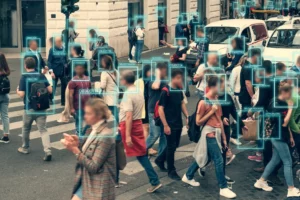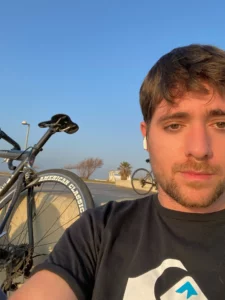A moment of inattention, a sudden change in circumstances, or an unforeseen event can turn an ordinary day into a relentless search for a missing person. This is a global issue that touches nearly every corner of the world, crossing borders, socio-economic statuses, and age groups. You probably see headlines frequently and might wonder about the extent of this problem. How many people actually go missing? What causes people to disappear? How can they be found?
To provide an accurate picture, it is important to first define what is meant by “missing person”. A missing person is generally defined as someone whose whereabouts are unknown, and there is concern for their safety or the welfare of others who may be impacted by the person’s absence. This covers a wide range of circumstances, from children who lose sight of their parents in a crowded place to adults who go missing intentionally or as a result of criminal activity.

To give you a sense of the scale, according to a report by the International Commission on Missing Persons (ICMP), it is estimated that every year, hundreds of thousands of individuals around the world go missing due to various reasons. This includes conflict-related disappearances, criminal abductions, migration-related disappearances, and disappearances related to natural disasters and other accidents. These numbers, however, might just be the tip of the iceberg as many cases go unreported.
As you can see, it is not an isolated problem. It’s a multi-faceted crisis steeped in a complex web of societal, legal, and humanitarian concerns. Furthermore, it is an issue that extends beyond the individual who has disappeared. The consequences ripple outward, affecting families, communities, and entire societies.
In the following sections, we will delve deeper into the reasons why people go missing, the impact of their absence, the mechanisms in place to find them, and most importantly, what you can do to help.
Factors contributing to the issue
As we’ve already touched on, the issue is a complex one, deeply intertwined with various social, political, and environmental factors. It’s important to understand these factors in order to grasp the full scope of the problem and, in turn, devise effective strategies to mitigate it. Below are the key causes often associated with disappearances.
Conflict and Migration
In regions grappling with armed conflict or severe socio-political instability, many people end up disappearing. The chaotic and violent circumstances often disrupt communication and separate families. In many cases, individuals are forcibly disappeared as a weapon of war or due to persecution.
Migration also contributes to that number. People on the move, especially those taking perilous routes in pursuit of a better life, often go missing. Their families are left in limbo, not knowing whether they have arrived safely or met with an unfortunate fate.
Criminal activity and human trafficking
Illegal activities like human trafficking, kidnapping, and organized crime are significant contributors to the problem. Victims of these crimes often vanish without a trace, and their families are left searching for answers.
Human trafficking, in particular, is a multi-billion-dollar global industry that affects millions of people worldwide. Those caught in this nefarious trade are often forced into labor, sexual exploitation, or much worse.
Vulnerable Groups
Certain segments of the population are particularly vulnerable to disappearing:
Children: Children, due to their dependence on adults and inability to protect themselves effectively, are often targeted for kidnapping and trafficking.
Elderly individuals: Those with memory-related conditions, like Alzheimer’s or dementia, may wander off and become lost.
Individuals with mental health issues: People dealing with mental health problems may intentionally go missing due to feelings of confusion, fear, or distress.
Natural Disasters and Accidents
Natural disasters like earthquakes, floods, and hurricanes can lead to the sudden and mass disappearance of individuals. Accidents, too, play a role, such as when a person goes hiking in the wilderness and never returns or when a ship or plane vanishes without a trace.
While each of these factors is distinct, they often intersect in various ways, making the issue even more complex. Therefore, addressing the problem requires not only immediate action but also long-term strategies to combat the root causes leading to their disappearance.
The Impact

When someone disappears, the effects extend far beyond their immediate absence. The ripple effects touch families, communities, and society as a whole, creating a web of emotional, social, and legal challenges. Let’s examine these more closely.
Emotional Impact on Family and Friends
Undoubtedly, the sudden disappearance of a loved one brings about profound emotional distress. Families and friends endure a constant state of anxiety, fear, and uncertainty.
Anxiety and Fear: Family members often experience anxiety and fear about the missing person’s safety and wellbeing. They may imagine worst-case scenarios, causing acute emotional distress.
Uncertainty: Not knowing what happened to their loved one, whether they are alive or not, families are forced to live in a limbo, a condition sometimes referred to as “ambiguous loss.” This uncertainty often complicates the grieving process and makes closure difficult to attain.
Guilt and Self-Blame: Often, those left behind may blame themselves for not preventing the disappearance. They might continually ruminate over what they could have done differently, leading to feelings of guilt and remorse.
Social Consequences
Disappearance also carries broader social implications.
Community Unrest: A missing person, particularly in cases involving suspected foul play, can create a sense of fear and unrest in a community. This can lead to reduced social activities and an overall change in community dynamics.
Stigmatization: Unfortunately, families may also face stigmatization and isolation in their communities. This can compound the emotional toll and create additional barriers to seeking support.
Legal and financial implications
Finally, the issue brings about substantial legal and financial challenges:
Legal Limbo: Without a body, families cannot get a death certificate, which leaves them in legal limbo. They can’t access bank accounts, settle estates, or make decisions about shared assets or dependents.
Financial Strain: The search for the missing person can lead to significant financial strain. Families may need to travel, hire private investigators, or take time off work.
While this paints a grim picture, it is crucial to remember that you are not powerless. Understanding these impacts can inspire collective action and policy changes. Awareness leads to empathy, and empathy can spur us all into action, helping to alleviate some of these effects and potentially prevent further disappearances.
Strategies and Techniques for Finding Missing Persons

After gaining an understanding of the magnitude and complexity of the global issue of disappearances, it’s natural to ask, “What’s being done to find them?” Various strategies and techniques are employed, many of which involve the collaborative efforts of law enforcement, community members, and international organizations. Let’s examine these methods in more detail.
Law Enforcement and Investigation Techniques
When a person goes missing, law enforcement agencies play a crucial role in the search and investigation process.
Immediate Response and Risk Assessment: Once a disappearance is reported, law enforcement officers first assess the risk level associated with the missing person’s circumstances. This determines the urgency and resources allocated to the case.
Collection and Examination of Evidence: Officers collect and examine all available evidence related to the disappearance. This can include personal belongings, surveillance footage, credit card transactions, phone records, and more.
Interviews and Statements: Witnesses, family members, and friends are interviewed to gather additional information about the person’s last known whereabouts and possible reasons for their disappearance.
Community involvement and awareness
This involves public appeals, community search efforts, and vigilance.
Public Appeals: Often, law enforcement agencies issue public appeals for information, leveraging local media outlets, social media platforms, and community noticeboards to spread the word.
Community Search Efforts: Community-led search parties can assist in the physical search, particularly in the immediate locality.
Vigilance: The public can play a significant role just by being vigilant and reporting any suspicious activity or information that may be pertinent.
Technological Tools
Digital Forensics: Investigators can extract crucial information from the person’s digital footprint—emails, social media activity, GPS data, etc.
Dark Web: Investigators can find a plethora of information at several dark web domains.
Surveillance Technology: Surveillance cameras can help trace movements, while drones can be used to search hard-to-reach areas.
Online Platforms and Databases: Online databases like the National Missing and Unidentified Persons System (NamUs) in the U.S. provide resources for reporting and searching for missing persons. Social media platforms, too, can rapidly disseminate information to a wide audience.
International Cooperation

Addressing the global issue calls for more than individual or local efforts; it requires international cooperation and robust legal frameworks. When nations collaborate and enforce comprehensive policies, they significantly increase the chances of locating missing individuals and preventing further disappearances.
Role of international organizations
Various international organizations play an active role, often stepping in when local resources are stretched thin or in instances where the problem transcends national borders.
International Committee of the Red Cross (ICRC): The ICRC has long been involved in efforts to locate individuals missing due to conflicts and natural disasters. They help reconnect family members, provide psychological support, and push for national and international legal measures to prevent disappearances.
International Organization for Migration (IOM): The IOM helps address the issue of missing migrants. They provide data, promote policy development, and offer direct assistance to affected families.
Transnational Law Enforcement Collaboration
Interpol’s Yellow Notices: Interpol, the international police organization, issues Yellow Notices to help locate missing persons, particularly minors. These notices are circulated to police in all 194 member countries.
Cross-Border Investigations: When necessary, law enforcement agencies work together on cross-border investigations, sharing information and resources.
Legal Frameworks and Policies
United Nations’ Enforced Disappearance Convention: This international treaty explicitly recognizes the right of any person not to be subjected to enforced disappearance. It obliges countries to take appropriate measures and to ensure the rights of victims and their relatives.
National Policies: Individual countries often have their own policies and laws regarding missing persons. For instance, in the United States, the “Bring Our Missing Home Act” provides federal grants to assist local law enforcement agencies in their search for missing individuals.
While these are invaluable, there’s still much work to be done. With thousands of people disappearing every year, it is clear that this is an issue that requires ongoing attention and effort from all sectors of society.
What you can do

Given the global nature of the issue, it’s easy to feel overwhelmed and unsure about how you, as an individual, can make a difference. But every effort counts. Here are some ways you can contribute to the solution.
Raise Awareness
One of the most powerful things you can do is raise awareness. Informing others about the magnitude of the issue can result in more resources being devoted and preventing disappearances.
Social Media: Share missing person alerts, informative articles, and resources on your social media platforms. A single share can reach hundreds, sometimes thousands, of people.
Community Discussions: Engage in discussions within your local community. Encourage your local schools, community centers, and workplaces to address the issue and provide resources.
Support Local and International Organizations
Organizations dedicated to finding missing persons often rely on public support to fund their work.
Donate: Financial contributions can help these organizations continue their vital work.
Volunteer: Many organizations require volunteers for various roles, from participating in community searches to assisting with administrative tasks.
Be Vigilant
Your everyday vigilance can make a significant difference.
Report Suspicious Activity: If you notice anything unusual in your community, report it to your local law enforcement agency.
Look Out for Missing Persons: Keep an eye out for individuals who match the descriptions in alerts. You never know when you might be the one to spot them.
Advocate for policy changes
Advocate for more robust policies and legal frameworks addressing missing persons.
Contact your representatives: Write to your local and national representatives, urging them to prioritize policies.
Support policy initiatives: Support initiatives that aim to strengthen laws and resources dedicated to addressing the issue.
Even small actions can have a big impact. By raising awareness, supporting organizations, staying vigilant, and advocating for stronger policies, you can help address this global issue. It’s through our collective efforts that we can make a real difference in the lives of those affected and their families.
Case Studies

Now that we’ve explored the factors contributing to disappearances and their impact, let’s bring the issue into sharper focus through some real-world examples.
Disappearances Due to Conflict: The Case of the Balkans
The Balkans conflict in the 1990s led to the disappearance of an estimated 40,000 people. The chaos of war, coupled with atrocities and ethnic cleansing campaigns, resulted in families torn apart and communities decimated. Despite efforts by organizations like the International Committee of the Red Cross (ICRC) and ICMP, thousands of families in the region are still searching for their loved ones, illustrating the long-lasting impact of conflict on the issue of missing persons.
Missing Migrants: The Mediterranean Crisis
The ongoing migrant crisis in the Mediterranean highlights another cause of mass disappearances. Every year, thousands of people embark on treacherous sea journeys, fleeing conflict and poverty in their home countries. Many of them go missing, their fates unknown. The International Organization for Migration (IOM) reported that in 2020 alone, over 1,200 people went missing or died trying to cross the Mediterranean.
Human Trafficking: The Tragedy of the Missing Chibok Girls
In 2014, the world woke up to the shocking news of the abduction of 276 schoolgirls from Chibok, Nigeria, by the militant group Boko Haram. The mass kidnapping brought global attention to the issue of human trafficking and child abduction in conflict regions. While some of the girls have since been rescued or have escaped, others remain missing or are feared dead.
Vulnerable Populations: Australia’s Missing Persons
In Australia, over 38,000 people are reported missing each year, with young people and those with mental health issues forming a significant portion of this number. Many of these cases highlight the need for better mental health support and public awareness about the issue.
Natural Disasters: The 2004 Indian Ocean Tsunami
Natural disasters can lead to sudden and large-scale disappearances, as shown by the 2004 Indian Ocean Tsunami. The disaster claimed the lives of approximately 230,000 to 280,000 people across 14 countries. Many of them were declared missing, their bodies never recovered.
Final Thoughts

It’s clear that the matter is far-reaching and complex, impacting countless individuals and communities worldwide.
While the issue is undoubtedly immense, our exploration also reveals a silver lining: the remarkable efforts and resources dedicated to locating missing persons. From law enforcement strategies and technological advancements to international cooperation and robust legal frameworks, much is being done to address the situation.
Perhaps the most empowering takeaway, though, is the role that you, as an individual, can play. Through raising awareness, supporting relevant organizations, staying vigilant, and advocating for policy changes, you can significantly contribute to the global effort. No action is too small when it comes to making a difference.
At the end of the day, it’s a testament to our shared humanity. It’s a call to collective action to ensure every person, everywhere, is accounted for. It reminds us of our responsibility to look out for one another, and that, in doing so, we can build a safer, more caring world.
In the words of former U.S. President Barack Obama, “We are the ones we’ve been waiting for. We are the change that we seek.”

